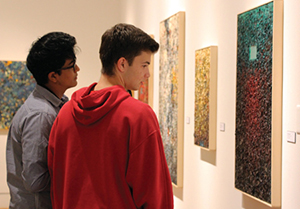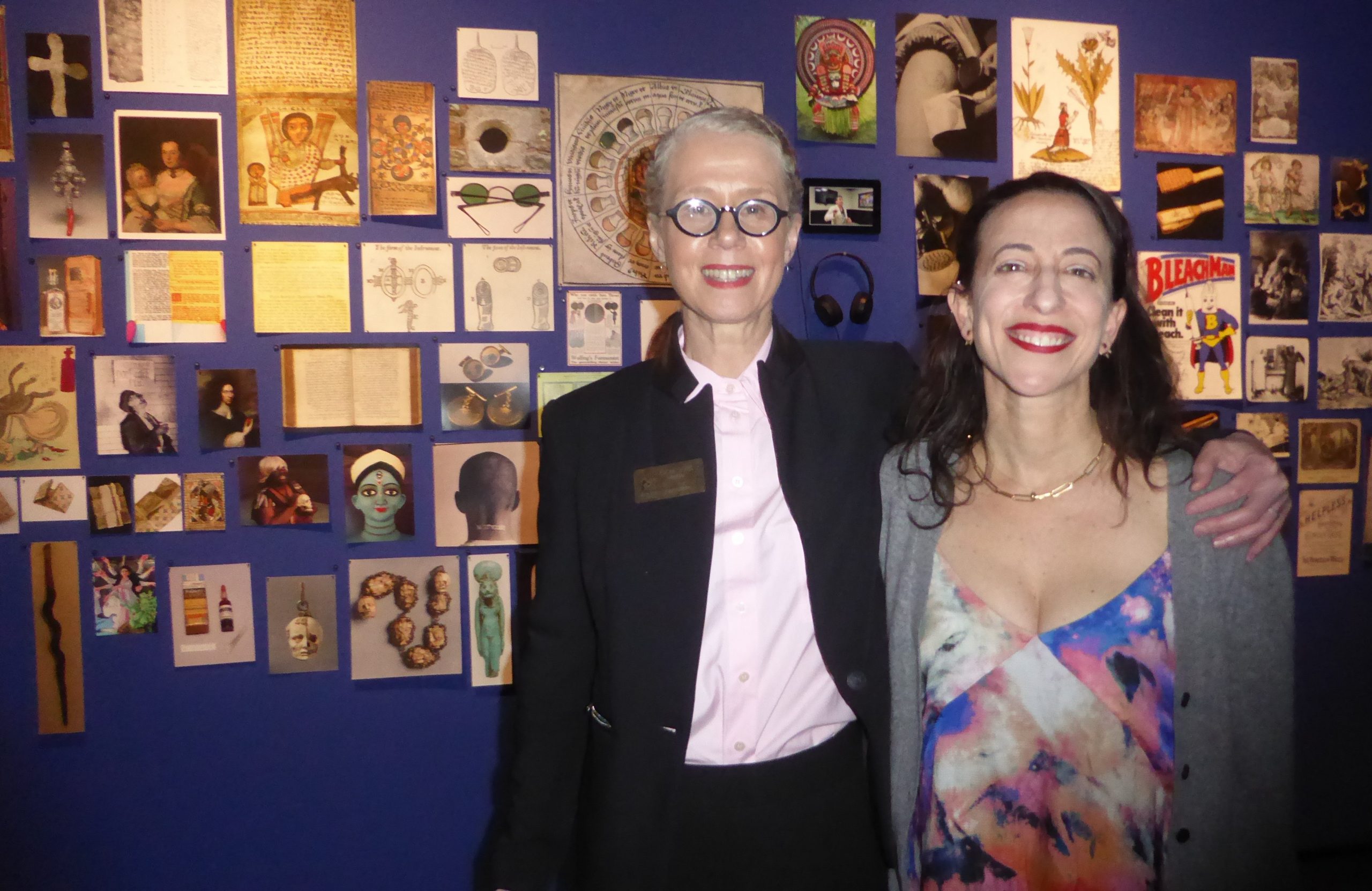

Inside the Triton Museum of Art’s Permanent Gallery is a seemingly disjointed collection of pieces. It begins with precision in its realistic paintings. From there, darker images of figures, some with wings, show themselves. The figures are followed by abstract, textured pieces and finally work containing thick slabs of layered paint. What appears to be work completed by multiple artists is actually the work of one: Charles Eckart.
In Eckart’s new show, A 46-Year Retrospective: The Space Between, running through April 19 at 1505 Warburton Ave., he touches on the various incarnations of his work, leading to his current body of paintscapes.


Starting as a realist, Eckart quickly became frustrated with the lack of creativity involved in realistic painting. “When you paint a realist painting you do a lot of the work up front,” he said. “You plan it out — the colors, compositions and all that — then you spend weeks actually executing it. There’s no new input to it. It has all been solved.”
After abandoning realism for a more “creative process,” Eckhart moved into figure work, as seen within some of the pieces lining the back of the gallery. “There is a very small selection of output on that stuff and a lot of it has been destroyed,” he said. “It was an outpouring of a lot of emotion work during that time and during that time, almost by accident, a winged figure showed up in the process of painting … I thought about that – a winged figure; a human winged figure. Now that is a very powerful statement because it’s a suggestion of the limitations on man’s desires and a possible symbol of liberation.”
As with realism, Eckart eventually became bored and transitioned to painting only heads. After moving from San Francisco to Point Reyes Station, he abandoned the human form for landscapes, with those turning expressionistic and earthy.
“Eventually I moved on [from landscape painting],” Eckart said. “Just looking down at the ground, the textures and colors are more earthy. It could be considered dark sided, but they were very earthy colors and textures and I thought, ‘well this is a great idea and there are no horizon lines, which brings it further into abstraction.’ I’ve now gotten to the point where I’ve just dropped any association with any object and now I’m doing paintscapes and they’re just about paint — abstract paint.”
Eckart noted that his paintscapes are so layered in paint that one of the pieces in the show weighed 26 pounds, all pigmented oils piled high atop one another. “You get into the painting and it looks pretty good,” he said. “You can stop, but I’ve decided to move on and see where it goes. The further I paint and the more I put on it, the richer the paint. The underlayers still peep through and it just gets richer and richer. You can’t get that in thin paint. You can’t get close to that. I do it for the sensualness of paint.”



